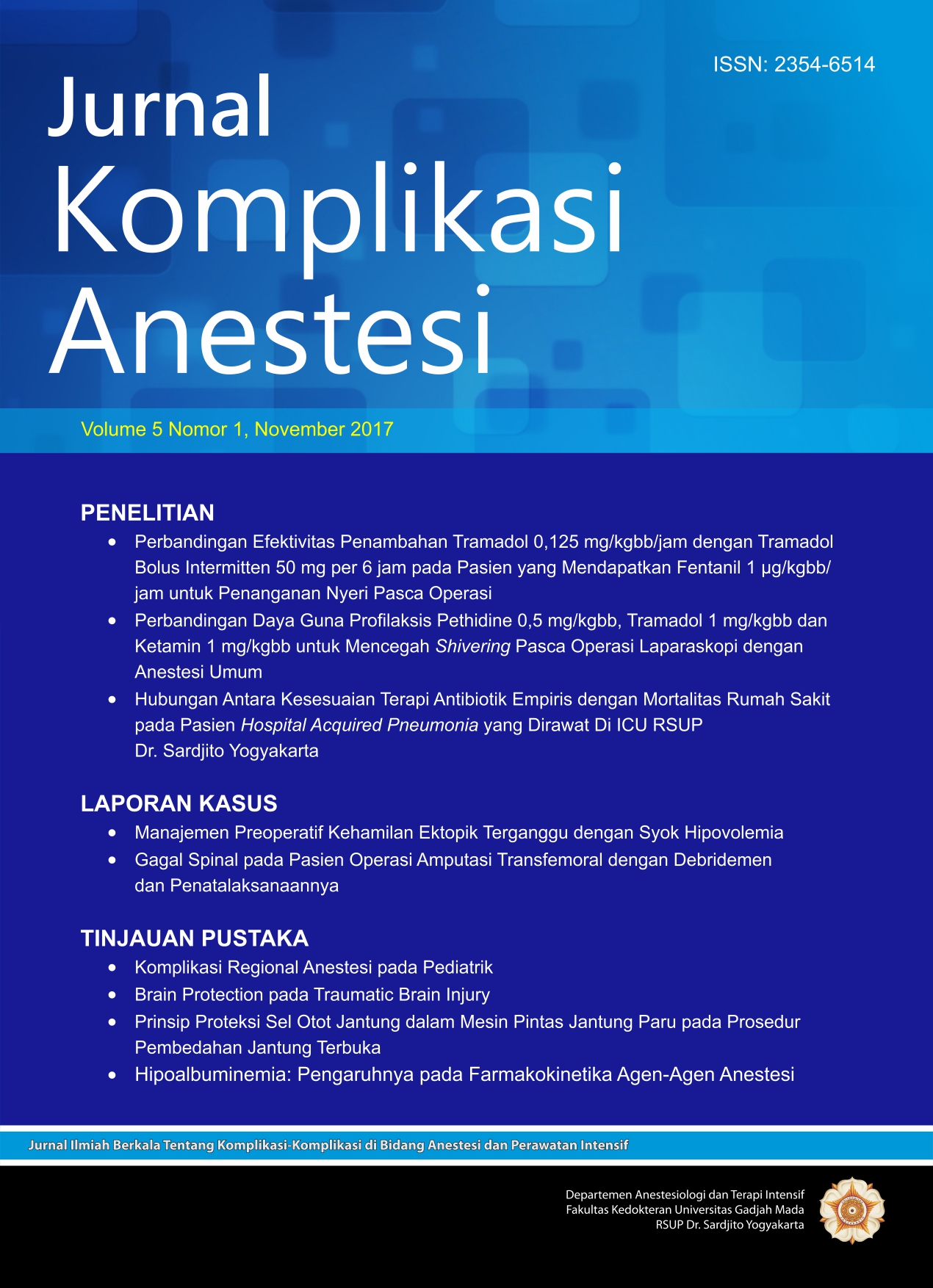Prinsip Proteksi Sel Otot Jantung dalam Mesin Pintas Jantung Paru pada Prosedur Pembedahan Jantung Terbuka
Abstract
Cardiovascular disease is still the leading cause of global death. At 2004, there are 17.1 million deaths caused by cardiovascular disease which is 29% of total overall death in the world. Coronary artery bypass graft (CABG) surgery is still the gold standard to treat cardiovascular disease. CABG surgery could be done using cardiopulmonary bypass machine so the heart could be stopped from beating for the entire procedure. Cardiopulmonary bypass and CABG procedure itself could cause myocardial injury. There should be a good understanding about cardiovascular physiology before using cardiopulmonary bypass, especially at myocardial protection strategy. The goal of myocardial protection during heart surgery is to avoid injury that is caused by cardiopulmonary bypass machine and ischemia. Cardioplegia is the main factor to help obtain the target of myocardial protection. Cardioplegia could induce cardiac arrest and give nutrition to the myocard at the same time. There are other strategies that could be used to obtain myocardial protection, like hypothermia technique, anesthesia preconditioning using volatile anesthesia and intravenous anesthesia agent. There are a lot of studies on myocardial protection right now, and the future strategies are focused on molecular physiology of the myocard.

Copyright (c) 2017 Teddy Ferdinand Indrasutanto, Cindy Elfira Boom

This work is licensed under a Creative Commons Attribution-NonCommercial-ShareAlike 4.0 International License.
The Contributor and the company/institution agree that all copies of the Final Published
Version or any part thereof distributed or posted by them in print or electronic format as permitted herein will include the notice of copyright as stipulated in the Journal and a full citation to the Journal.
















